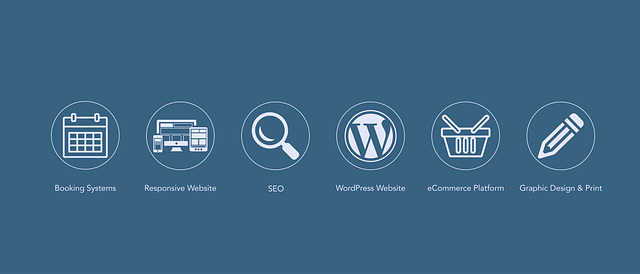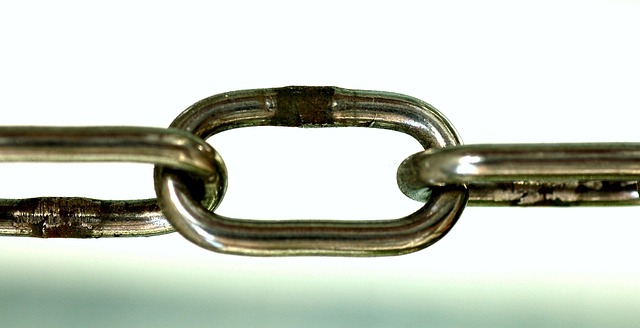Smart internal linking in WordPress is a powerful strategy to enhance user experience and SEO performance. By optimizing key pages, creating relevant backlinks with strategic anchor text, and structuring content through categories and tags, site owners can guide users and improve search engine visibility. Using dedicated SEO plugins simplifies the process, while tracking CTRs and user engagement metrics allows for data-driven optimizations, ultimately boosting rankings and website traffic.
Unleash the full potential of your WordPress site with smart internal linking strategies. Effective internal linking not only improves user experience but also boosts SEO rankings. This comprehensive guide delves into the art and science of creating strategic internal links in WordPress. From identifying key pages to leveraging plugins, learn how to build a powerful network of connections that drive engagement and enhance your site’s visibility. Discover best practices for crafting contextual anchor text and structuring your site for optimal link performance.
- Understanding the Power of Internal Linking in WordPress
- Identifying Key Pages for Strategic Internal Links
- Creating Smart and Contextual Anchor Text
- Efficiently Structuring Your Site for Better Internal Linking
- Leveraging Plugins for Automated Internal Link Building
- Measuring Success: Tracking Click-Through Rates and User Engagement
Understanding the Power of Internal Linking in WordPress

In WordPress, internal linking isn’t just about connecting pages; it’s a strategic move to enhance user experience and boost SEO. By implementing smart internal links for WordPress, site owners can guide users seamlessly through their content while improving search engine visibility. A well-crafted smart internal links strategy ensures that each page has relevant backlinks, which not only helps in distributing link equity but also keeps visitors engaged by providing them with valuable related content.
A smart internal links tutorial reveals the art of linking posts and pages within WordPress without cluttering the user experience. This involves using anchor text that accurately describes the linked content, optimizing for keyword-rich URLs, and ensuring a logical flow of information. When done right, smart internal links SEO can significantly improve page rankings, reduce bounce rates, and increase time spent on site, making it an indispensable part of any WordPress optimization strategy.
Identifying Key Pages for Strategic Internal Links

When it comes to strategic internal linking, identifying key pages is the first crucial step. These are the core content pieces that form the backbone of your website’s information architecture. In WordPress, focus on pages with high traffic or significant search engine rankings. For instance, blog posts that consistently attract organic visitors or product pages that drive sales should be prioritized. The goal is to create a network where these key pages support each other, enhancing user experience and boosting SEO performance.
Utilizing smart internal links in WordPress involves a strategic approach. Start by analyzing your site’s analytics to understand user behavior. Identify pages with high bounce rates or low time spent on page as potential areas for improvement. Incorporate relevant, contextual internal links within these pages, linking to the key content we discussed earlier. This not only improves navigation but also helps distribute link equity, which is a vital component of smart internal links SEO. A smart internal links tutorial or tips can guide you in implementing these strategies effectively.
Creating Smart and Contextual Anchor Text

Creating effective anchor text for your internal links is a crucial part of smart internal linking in WordPress. Unlike simple URL snippets, smart anchor text provides users and search engines with context, enhancing both user experience and SEO. When crafting anchor text, aim for keywords that accurately reflect the content of the linked page while keeping it natural and relevant to the surrounding text. For instance, instead of “click here,” use phrases like “learn more about organic SEO tips” or “explore our WordPress optimization guide.”
This strategy not only makes your links look cleaner but also signals to search engines that your internal links are valuable and relevant. When implementing smart internal links SEO, consider using a mix of primary and secondary keywords, brand names, and even call-to-actions. Remember, the goal is to create a seamless reading experience while ensuring each link contributes to your overall optimization strategy. For instance, “Check out our latest post on smart internal links optimization for WordPress” provides both context and encourages users to engage with your content.
Efficiently Structuring Your Site for Better Internal Linking

Efficiently structuring your website is key to unlocking the full potential of smart internal links for WordPress. A well-organized site architecture allows both users and search engines to easily navigate through your content, fostering a positive user experience while boosting your SEO efforts. Start by creating a clear hierarchy using categories and tags effectively. Organize related posts together under specific topics, making it easier for visitors to discover new content and for search engines to understand the context of each page.
Implementing a smart internal links strategy involves seamlessly integrating relevant links throughout your content. This could mean linking to related blog posts, category pages, or even specific anchor text within the same article. Use anchor text that accurately reflects the linked page’s content, as this helps search engines and users understand the relationship between pages. A tutorial on crafting these smart internal links can guide you in choosing the most relevant and contextually appropriate links, ensuring your site is not only well-structured but also optimized for better SEO performance.
Leveraging Plugins for Automated Internal Link Building

Many WordPress users often seek efficient ways to enhance their website’s internal linking structure, and this is where plugins come into play. Dedicated SEO plugins offer a suite of tools tailored for automated internal link building, simplifying the process for content creators and marketers. These plugins intelligently analyze existing content, suggest relevant links, and streamline the task of creating smart internal links for WordPress sites.
By utilizing these plugins, users can implement a strategic smart internal links strategy and optimization techniques. They provide valuable insights and recommendations, ensuring that each link is contextually relevant and contributes to better user engagement and search engine visibility. With just a few clicks, you can transform your site’s navigation, making it easier for both visitors and search engines to explore your content, ultimately boosting your SEO efforts.
Measuring Success: Tracking Click-Through Rates and User Engagement

Measuring success is a crucial step in optimizing your site’s internal linking strategy, especially when using smart internal links for WordPress. Tracking click-through rates (CTRs) allows you to gauge the effectiveness of your link placement and target audience interest. By analyzing which pages are gaining more traffic from internal links, you can identify high-performing content and those that need improvement. This data is invaluable for refining your SEO strategy and ensuring your smart internal links optimization efforts are paying off.
User engagement metrics further enhance your understanding of how visitors interact with your site after clicking on internal links. Monitoring time spent on page, bounce rates, and scroll depth provides insights into the quality of user experience and content relevance. Incorporating these smart internal links tips into your WordPress setup enables you to create a seamless user journey, foster better engagement, and ultimately, boost search engine rankings through improved SEO.
